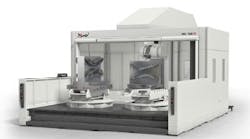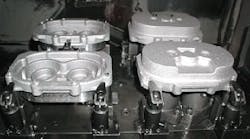The future of U.S. manufacturing rides on the continued success of small and midsize manufacturers that account for more than 40 percent of U.S. production's value and 60 percent of total U.S. manufacturing employment. These companies constantly face challenges such as changing customer demands, worker shortages, evolving technologies and high costs, all of which impede their abilities to compete against foreign competitors.
While many leading small and mid-size manufacturers follow effective business plans, the truly successful ones all seem to adhere to the same 15 best practices.
- Stay in touch with customers, talk to them about their needs and look to them for new product ideas.
- Differentiate products and services to better define and develop a competitive advantage.
- Devote the necessary time and energy to marketing — develop a distinct product and marketing strategy and expand and diversify customer bases.
- Go global. Develop export markets.
- Ensure that activity-based cost systems help to contain cost increases, and focus on activities that consume the most resources. Highlight and restrain nonvalue-added activities.
- Establish a long-term relationship with a banker who takes the time and effort to understand the company.
- Invest at least 3 percent of payroll in employee training. Get involved with workforce investment boards, government-sponsored training programs and local educational institutions such as community colleges that offer training in manufacturing skills.
- Explore how experts from a manufacturing extension partnership can help with business.
- Appoint a majority of outsiders with relevant and diversified business experience to the board of directors or to a board of advisers. Look to those outside directors or advisers for opinions and advice and welcome their challenge.
- Develop a plan for management succession. Start estate planning early and keep abreast of estate tax laws and regulations continually.
- Monitor company viability and competitiveness on a daily, weekly and monthly basis with a set of key performance indicators tailored to the company's particular business challenges.
- Weigh both quantitative and qualitative factors in making capital investment decisions. Strike a balance between staying on top of technology and making investments that are not affordable. No company has unlimited resources.
- Constantly look for opportunities to delegate, to empower employees at all levels and to create the corporate culture for a high-performance workplace.
- Speak to government representatives at the federal, state and local levels.
- Stay abreast of legislative, regulatory and policy developments through the general media, business publications and industry, trade and professional organizations such as the National Association of Manufacturers.
SOURCES FOR THIS ARTICLE INCLUDE:
RSM McGladrey Inc. (www.rsmmcgladrey.com)
National Association of Manufacturers (www.nam.org)
The Manufacturing Institute (www.nam.org)





